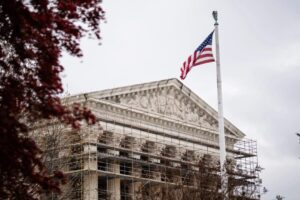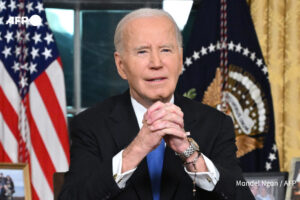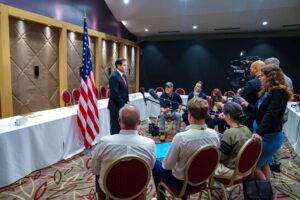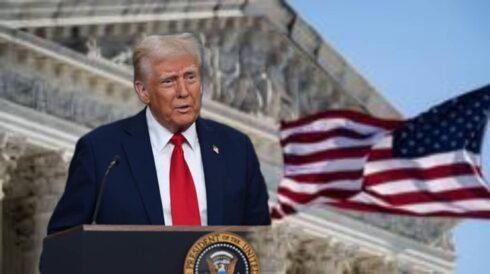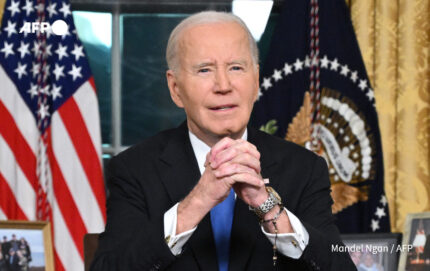President Donald Trump has made his first appeal to the U.S. Supreme Court, seeking to assert his authority over independent federal agencies. His administration has filed an emergency request for the justices to rule on whether he can unilaterally fire the leader of the U.S. Office of Special Counsel (OSC), an independent whistleblowing agency.
The move comes after Trump dismissed Hampton Dellinger, the Biden-appointed head of the OSC, via email earlier this month. Dellinger subsequently sued the administration, arguing that his removal violated a federal law that restricts the president’s ability to fire independent agency heads except for “neglect of duty, malfeasance, or inefficiency.” A federal judge in Washington, D.C., temporarily reinstated Dellinger, and a divided U.S. Court of Appeals refused to overturn that ruling, prompting the Trump administration to escalate the case to the Supreme Court.
Justice Department Defends Presidential Authority
In its filing with the Supreme Court, the Department of Justice (DOJ) argued that lower courts should not have the power to prevent a president from dismissing executive officials. Acting Solicitor General Sarah M. Harris wrote in the appeal that no court in American history has ever “wielded an injunction to force the president to retain an agency head.” She contended that such rulings undermine the executive branch’s authority and set a dangerous precedent for presidential power.
Trump’s legal team is pushing for an expedited ruling, emphasizing the need to prevent judicial overreach into executive decision-making. The case could have significant implications for how future presidents handle independent agencies, particularly in determining whether laws shielding certain officials from termination should remain in place. With the Supreme Court’s current conservative majority, the case will be closely watched for its potential impact on federal governance.
Mass Firings and Restructuring Across Federal Agencies
While the Supreme Court considers the OSC case, Trump’s efforts to reshape the federal workforce continue at an unprecedented pace. Over the weekend, thousands of federal employees received termination notices, with health agency workers in their probationary periods being let go. Internal government sources confirmed that at least 9,500 workers across the Departments of Health and Human Services, Energy, Veterans Affairs, Interior, and Agriculture have been dismissed.
Additionally, the White House has offered voluntary buyouts to 75,000 employees in an attempt to further reduce the federal workforce. The administration argues that these cuts are necessary to improve government efficiency and reduce bureaucracy. However, critics claim the mass firings undermine essential public services and weaken oversight mechanisms designed to keep the executive branch accountable.
Legal and Political Fallout from Trump’s Workforce Cuts
Trump’s aggressive push to downsize the federal government has sparked legal challenges and political backlash. His administration has already faced numerous lawsuits over executive orders on immigration, transgender policies, and government spending. Many of these cases are expected to reach the Supreme Court as well.
Democrats and labor unions have accused the administration of targeting career civil servants for political reasons, rather than for legitimate performance concerns. Senate Democrats have vowed to investigate the mass terminations, calling them an “unprecedented assault on the federal workforce.” Meanwhile, conservative supporters argue that Trump is fulfilling his campaign promise to rein in what he calls the “deep state.”
Elon Musk’s Role in Government Restructuring
A controversial aspect of Trump’s cost-cutting strategy is the involvement of billionaire entrepreneur Elon Musk. The Department of Government Efficiency (DOGE), a newly formed task force led by Musk, has played a central role in restructuring federal agencies. Sources indicate that DOGE has spearheaded efficiency audits that led to the dismissal of thousands of workers deemed unnecessary.
While Musk has defended his team’s recommendations as necessary reforms, critics question his influence over federal employment decisions. Lawmakers have demanded more transparency regarding the task force’s methods and Musk’s level of authority in shaping federal policies. As Trump’s Supreme Court battle unfolds, his broader efforts to reshape the federal government are likely to remain a contentious issue in Washington.


